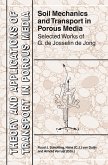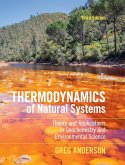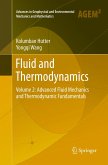This book presents a compilation of state-of-the art studies on gas and vapor transport processes in porous and fractured media. A broad set of models and processes is presented, including advection/diffusion, the Dusty Gas Model, enhanced vapor diffusion, phase change, coupled processes, solid/vapor sorption, and vapor-pressure lowering. Numerous applications are also presented that illustrate these processes and models in current problems facing the scientific community.
This book fills a gap in the general area of transport in porous and fractured media-an area that has historically been dominated by studies of liquid-phase flow and transport. This book identifies gas and vapor transport processes that may be important or dominant in various applications, and it exploits recent advances in computational modeling and experimental methods to present studies that distinguish the relative importance of various mechanisms of transport in complex media.
CLIFFORD K. HOAND STEPHEN W. WEBB Sandia National Laboratories, P. O. Box 5800, Albuquerque, NM 87185, USA Gas and vapor transport in porous media occur in a number of important applications includingdryingofindustrialandfoodproducts,oilandgasexploration,environm- tal remediation of contaminated sites, and carbon sequestration. Understanding the fundamental mechanisms and processes of gas and vapor transport in porous media allows models to be used to evaluate and optimize the performance and design of these systems. In this book, gas and vapor are distinguished by their available states at stan- ? dard temperature and pressure (20 C, 101 kPa). If the gas-phase constituent can also exist as a liquid phase at standard temperature and pressure (e. g. , water, ethanol, toluene, trichlorothylene), it is considered a vapor. If the gas-phase constituent is non-condensable at standard temperature and pressure (e. g. , oxygen, carbon di- ide, helium, hydrogen, propane), it is considered a gas. The distinction is important because different processes affect the transport and behavior of gases and vapors in porous media. For example, mechanisms specific to vapors include vapor-pressure lowering and enhanced vapor diffusion, which are caused by the presence of a g- phase constituent interacting with its liquid phase in an unsaturated porous media. In addition, the "heat-pipe" exploits isothermal latent heat exchange during evaporation and condensation to effectively transfer heat in designed and natural systems.
This book fills a gap in the general area of transport in porous and fractured media-an area that has historically been dominated by studies of liquid-phase flow and transport. This book identifies gas and vapor transport processes that may be important or dominant in various applications, and it exploits recent advances in computational modeling and experimental methods to present studies that distinguish the relative importance of various mechanisms of transport in complex media.
CLIFFORD K. HOAND STEPHEN W. WEBB Sandia National Laboratories, P. O. Box 5800, Albuquerque, NM 87185, USA Gas and vapor transport in porous media occur in a number of important applications includingdryingofindustrialandfoodproducts,oilandgasexploration,environm- tal remediation of contaminated sites, and carbon sequestration. Understanding the fundamental mechanisms and processes of gas and vapor transport in porous media allows models to be used to evaluate and optimize the performance and design of these systems. In this book, gas and vapor are distinguished by their available states at stan- ? dard temperature and pressure (20 C, 101 kPa). If the gas-phase constituent can also exist as a liquid phase at standard temperature and pressure (e. g. , water, ethanol, toluene, trichlorothylene), it is considered a vapor. If the gas-phase constituent is non-condensable at standard temperature and pressure (e. g. , oxygen, carbon di- ide, helium, hydrogen, propane), it is considered a gas. The distinction is important because different processes affect the transport and behavior of gases and vapors in porous media. For example, mechanisms specific to vapors include vapor-pressure lowering and enhanced vapor diffusion, which are caused by the presence of a g- phase constituent interacting with its liquid phase in an unsaturated porous media. In addition, the "heat-pipe" exploits isothermal latent heat exchange during evaporation and condensation to effectively transfer heat in designed and natural systems.








